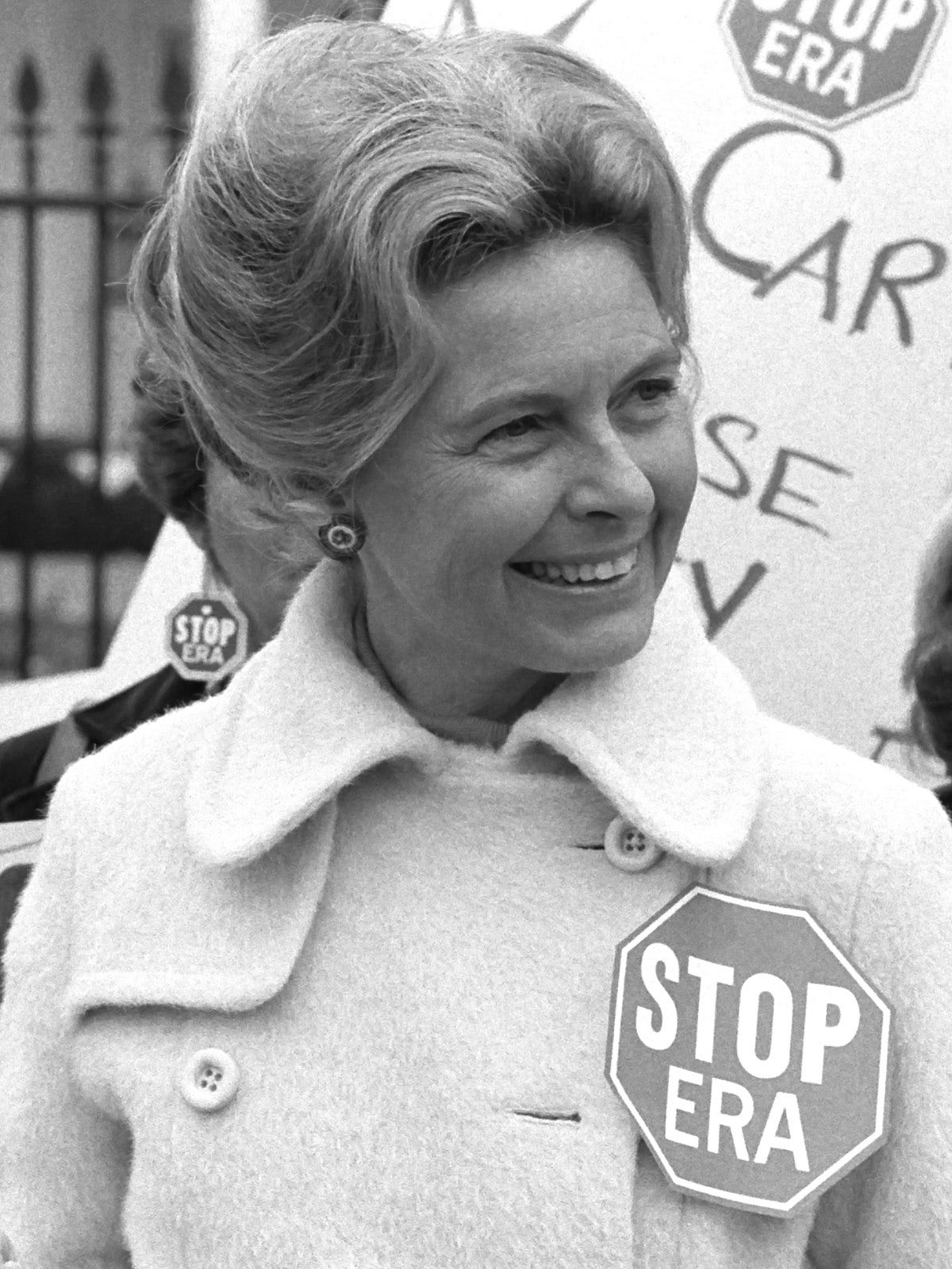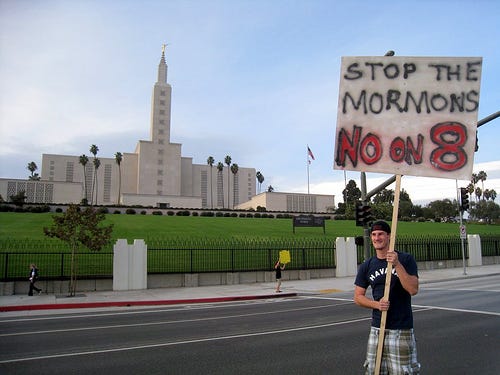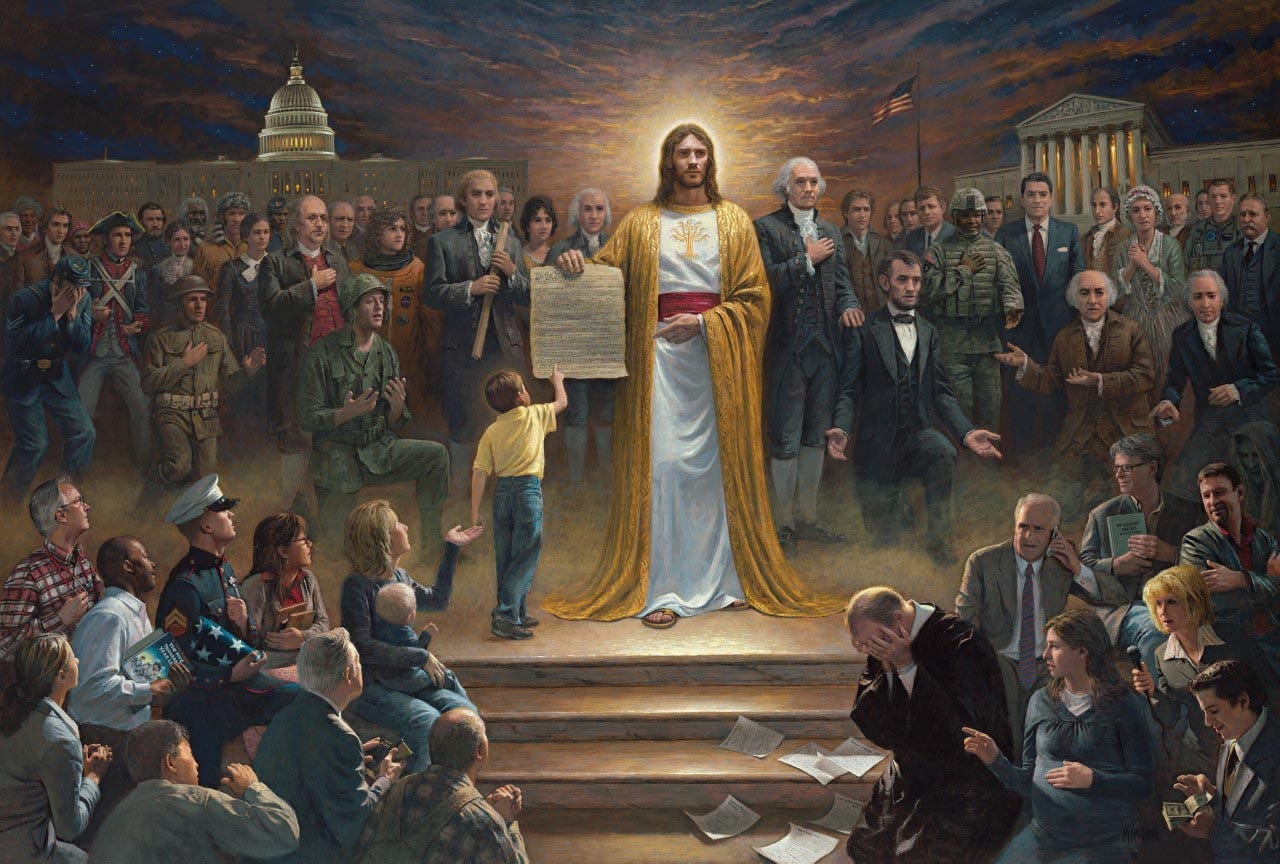Latter-day Saints and White Christian Nationalism
In the first installment of a two-part essay, Harvard Divinity School student Kyle Belanger offers a brief history of the intersection of Mormonism and right-wing politics

To my Catholic friends . . . think about Amy Coney Barrett and think about the Little Sisters of the Poor. To my Protestant and evangelical friends, we have to remember that it is by the grace of our Lord and Savior Jesus Christ that we’ve had four years of prosperity and peace. To my Mormon friends, my Latter-day Saint friends, think of him as Captain Moroni: he seeks not power but to pull it down; he seeks not the praise of the world or the fake news, but he seeks the wellbeing and the peace of the American people.
Senator Mike Lee (R-Utah)1
Mormonism and the Christian Right
While speaking before a rally for Trump supporters in Arizona during the 2020 election, Mike Lee ignited a firestorm among many Latter-day Saints for comparing Donald Trump to the Book of Mormon figure Captain Moroni. Senator Lee’s comments suggested that Trump’s tumultuous political career was analogous to Captain Moroni’s campaign against monarchy. Lee’s analogical political theology has roots in some Mormons’ habit of buttressing right-wing politics with motifs and examples drawn from their own scripture and history.
In his appeal to evangelical, Catholic, and Latter-day Saint voters, Senator Lee invoked a long history dating back to the 1970s, when conservative Christian activists such as singer Anita Bryant and televangelists Jerry Falwell and Pat Robertson worked tirelessly to unite so-called “values voters” under a growing coalition that would eventually be called “the Christian Right.” Against the liberalizing tides of mainline theological ecumenism, American Catholics, Evangelicals, and Mormons built a utilitarian political ecumenism to resist the cultural and political impact of secularism and the sexual revolution.2 Despite enduring confessional differences, the core groups of the Christian right sought national moral renewal through political action that transformed the priorities and core constituencies of the Republican Party.
Latter-day Saints were mobilized in the budding coalition of Christian conservatives due to our outsized electoral impact in the Mountain West and in spite of our “suspicious” beliefs. Phyllis Schlafly, an attorney and antifeminist Catholic activist, courted Relief Society president Barbara Smith in her nationwide campaign against the ERA, the defeat of which was heavily indebted to the mobilization of Mormon women.3 Mormon political engagement was also decisive in defeating early ballot initiatives for same-sex marriage in Hawaii and California, as senior church leaders understood feminism, reproductive rights, and changing attitudes around gender and sexuality as part and parcel of a unified threat against the patriarchal family.4
Latter-day Saints have thus long been a bedrock constituency of the larger Christian right. And our loyalty to the Republican Party has hardly waned under the party’s latest standard bearer: two-thirds of American Mormons voted for Donald Trump in 2020. While we cannot flatten the motivations of all Trump voters to right-wing political extremism, the results of such political behavior are the same: legitimizing Donald Trump’s disastrous political career and empowering his base to further enact their illiberal vision for America.
It mustn’t therefore come as a surprise that some of our faithful—including Senator Lee—identify with MAGA politics, as exhibited in cases such as the Deseret Nationalist (#DezNat) movement on X (formerly Twitter). Political extremism and American Mormonism are no strangers. We cannot forget that infamous segregationist George Wallace had tapped a willing Ezra Taft Benson to be his running mate in 1968, an outcome we may thank President McKay for preventing.5 That “[m]any Americans have lost sight of the truth that righteousness is the one indispensable ingredient to liberty” necessitated for President Benson a conservative political affront against the encroaching influences of cultural libertinism.6 American exceptionalism, fears of decadence and decline, and right-wing sexual politics coalesce into a deep and abiding commitment among some American Mormons to the tropes, anxieties, and misdeeds that animate what has come to be called Christian nationalism—the belief that the United States is a Christian nation uniquely chosen of God, that God moves providentially through American history and destiny, and that the nefarious influences of secularism, multiculturalism, and the sexual revolution are an affront to our Christian heritage.
Such tropes and concerns have become central to a Mormon imaginary of Christian nationalism, typified for instance in the work of St. George-based artist and Latter-day Saint Jon McNaughton. McNaughton’s mastery of right-wing kitsch (see below) demonstrates the cultural cachet of Christian nationalist imagery, such as in his transhistorical depiction of Jesus holding the U.S. Constitution in “One Nation Under God.” Rather than understanding our constitution as a historically contingent document with strengths and weaknesses, McNaughton enacts visually what is self-evident in the Christian nationalist mind: that God has ordained the United States as a nation chosen above all others (the sort of history one might encounter in former BYU professor Cleon Skousen’s far-right books The Making of America and The 5,000 Year Leap).7
Combatting Christian Nationalism
So how do we combat Christian nationalism as Latter-day Saints who belong to a global church and are citizens of a religiously diverse, liberal democracy? Amanda Tyler, of the Baptist Joint Committee for Religious Liberty (BJC), writes that combatting Christian nationalism “will take a broad, diverse coalition of Americans working together to understand the ideology and call it out.” She continues,
Necessary—though not alone sufficient—to that coalition will be a strong response from American Christians, particularly white American Christians and predominantly white Christian institutions, which have contributed to and benefitted from Christian nationalism in the culture.8
As Latter-day Saints, we have a moral obligation to join actively and vociferously in a multifaith coalition to combat right-wing political extremism. Bravely challenging narratives of American exceptionalism and chosenness in our conversations at church and with family and friends is also vital to standing up for pluralism and religious freedom for all Americans. American exceptionalism—the belief that the United States is distinctly chosen above other nations, often by means of divine favor and providence—is the animating force behind Christian nationalism. To believe that America has a divine mission to fulfill translates into protest, mobilization, and legislation towards achieving that eschatological future.
Yet most Latter-day Saints know that neither our unique faith nor Christianity at large can pretend to represent the American public. Given our own fraught history with the American religious mainstream and our marginal stance in the larger Christian conversation, we should be alarmed when bureaucrats and legislatures try their hands at establishing a state religion by requiring biblical instruction or displaying the ten commandments in classrooms. We know well enough that to establish Christianity in the public square is to police who and what qualifies as Christian. Would Mormons count as Christians in such a polity? This is perhaps why a promising 60% of American Mormons in a recent PRRI survey either rejected or were skeptical of Christian nationalism, while 33% demonstrated sympathy and only 5% overt support. Combining these numbers with growing Mormon distrust of Donald Trump suggests a viable path forward, beyond right-wing Christian nationalism among Latter-day Saints. Moreover, our global outlook in the Church of Jesus Christ today has relegated the preaching of unabashed American exceptionalism from the pulpit to the past, making way for better conversations about pluralism and humanitarianism.
Mike Lee, campaign speech transcription dated 29 October 2020. Video courtesy of FOX 13 News Utah, https://www.youtube.com/watch?v=Zo-td73qAPU.
For additional reading about political ecumenism in the Christian right, see Neil J. Young, We Gather Together: The Religious Right and the Problem of Interfaith Politics (New York: Oxford University Press, 2016).
Colleen McDannell, Sister Saints: Mormon Women Since the End of Polygamy (New York: Oxford University Press, 2018), 102–3; Young, We Gather Together, 158–60.
See Neil J. Young, “Mormons and Same-Sex Marriage: From Era to Prop 8,” in Out of Obscurity: Mormonism Since 1945, ed. Patrick Q. Mason and John G. Turner (New York: Oxford University Press, 2016), 149–153.
Patrick Mason, “Ezra Taft Benson and Book of Mormon Conservatism,” in Out of Obscurity, 65.
Ezra Taft Benson, “The Constitution: A Glorious Standard,” Ensign, vol. 6, no. 5 (May 1976), 92. https://www.churchofjesuschrist.org/study/ensign/1976/05/the-constitution-a-glorious-standard?lang=eng.
For an in-depth look into Cleon Skousen and Jon McNaughton’s impact on Christian nationalism, see Nicholas B. Shrum, “Materializing Faith and Politics: The Unseen Power of the NCCS Pocket Constitution in American Religion,” Dialogue 57, no. 2 (Summer 2024), 41–83; Nicholas B. Shrum, “Mormon-American Nationalism and the Religiopolitical Art of Jon McNaughton,” Journal of Mormon History 50, no. 2 (2024): 43–77.
“Section VII: Christian Responses to Christian Nationalism After January 6,” in Report on Christian Nationalism after the January 6 Insurrection, ed. Baptist Joint Committee and Freedom from Religion Foundation (published 9 February 2022), 41, https://bjconline.org/jan6report/.









